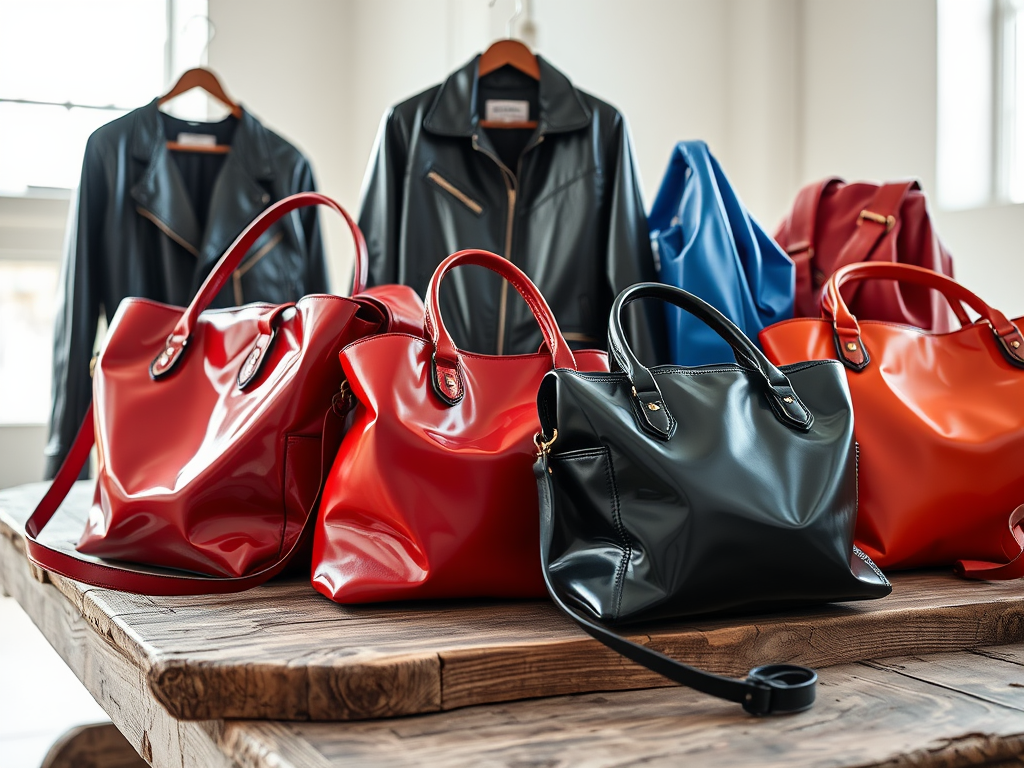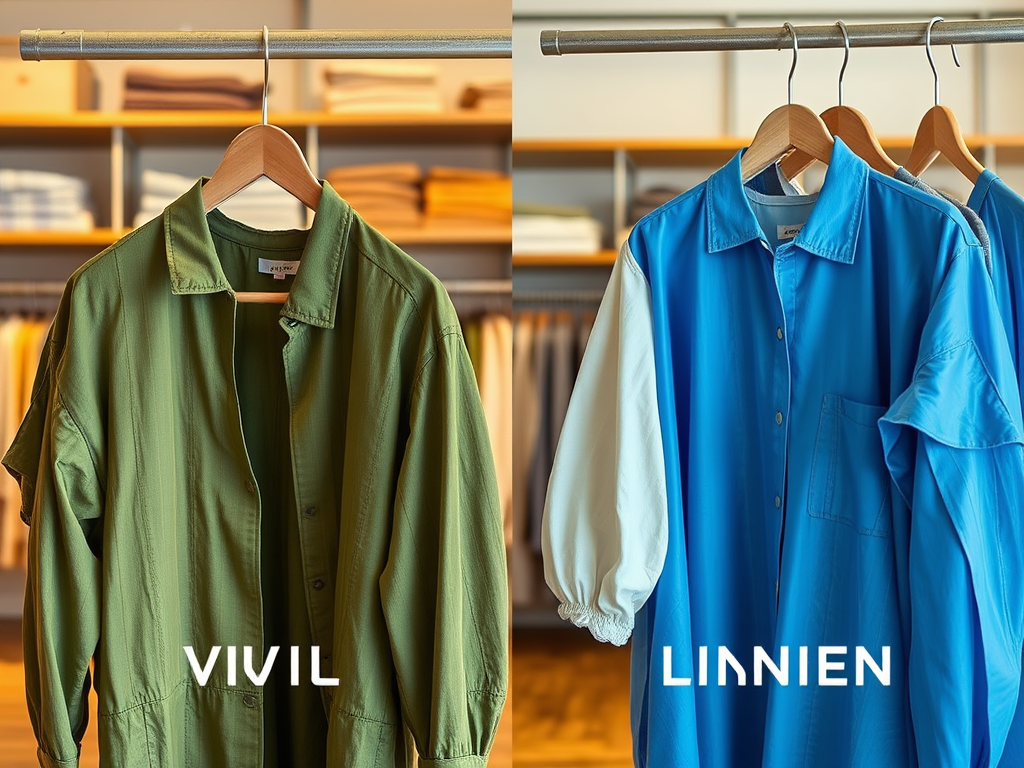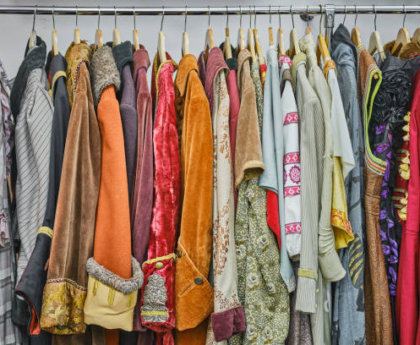As the world becomes increasingly aware of environmental issues, sustainable fashion emerges as a significant movement urging consumers to reconsider their clothing choices. Evolving beyond mere trends, sustainable fashion encourages an understanding of the materials that shape our wardrobes. Two prominent contenders in this space are vinyl and linen, each offering distinct attributes that cater to various consumer needs. Vinyl, a synthetic material, boasts durability and versatility, making it a fashionable choice. On the other hand, linen celebrates its natural roots, emphasizing sustainability and a lower ecological impact. This article aims to dissect the benefits and drawbacks of each material, guiding readers in making conscientious choices in the realm of ethical fashion.
Overview of Vinyl in Fashion

Vinyl is a synthetic product that has seamlessly integrated itself into the fashion industry. Derived from polyvinyl chloride (PVC), it is celebrated for its water-resistant properties and remarkable versatility. This material is frequently utilized in a variety of fashion items, from edgy jackets to vibrant handbags, thanks to its ability to mimic other materials like leather. Its ease of maintenance and colorful options make it appealing to many consumers who desire flair and functionality. However, as fashion evolves, the sustainability of vinyl comes under scrutiny, raising essential questions about its lifecycle and environmental impact.
- Durability: Vinyl is renowned for its long-lasting nature, often outliving natural materials.
- Maintenance: It’s easy to clean, typically requiring just a wipe with a damp cloth.
- Design Versatility: Vinyl can be engineered to take on different textures and colors, enhancing design flexibility.
While vinyl presents multiple advantages, its sustainability drawbacks cannot be ignored. On one hand, its durability and aesthetic diversity allow for a wide range of creative expressions in fashion design. However, its production relies heavily on chemical processes that can be detrimental to the environment.
- Pros:
- Water-resistant and durable, leading to longer product lifespans.
- Versatile for various styles and designs, appealing to diverse fashion tastes.
- Cons:
- Not biodegradable, contributing to significant landfill waste.
- Production involves harmful chemicals that may threaten ecosystems.
Overview of Linen in Fashion

Linen stands out as a celebrated fabric with deep historical roots, originating from the flax plant. This natural material is praised for its biodegradability and breathability, aligning perfectly with the principles of sustainable fashion. Compared to many other textiles, linen requires significantly less water to produce, making it an ecologically sound choice. Its texture—often cool and crisp—creates a distinct aesthetic beloved by many fashion enthusiasts, particularly in warm climates. As sustainable fashion gains traction, linen’s benefits become more relevant, aligning with the growing demand for eco-friendly options.
- Biodegradability: Linen naturally decomposes, leaving no harmful residue behind.
- Water Efficiency: The cultivation of flax requires far less water compared to cotton.
- Comfort: Its breathable properties ensure comfort in hot weather, making it a popular choice for summer garments.
| Feature | Vinyl | Linen |
|---|---|---|
| Material Type | Synthetic | Natural |
| Biodegradability | No | Yes |
| Durability | High | Moderate |
| Water Usage | High | Low |
Environmental Impact of Vinyl vs. Linen
The environmental consequences of both vinyl and linen form a pivotal part of the sustainable fashion dialogue. Vinyl’s production process involves harmful practices that contribute to pollution. In contrast, linen farming promotes biodiversity and has a less detrimental impact on the environment due to its natural growth cycle. As consumers become more environmentally conscious, understanding these impacts is crucial to making informed choices. By analyzing the full ecological footprint of each material, consumers can better align their purchasing decisions with their sustainability values.
A comprehensive evaluation of the life cycle for vinyl and linen highlights their respective benefits and downsides. For vinyl, the lifecycle stages include extraction of raw materials, manufacturing, usage, and disposal. Each of these phases contributes to its environmental impact through carbon emissions and the use of chemicals. Conversely, linen’s lifecycle—from cultivation to end-of-life disposal—often yields a lower environmental footprint, validating its status as a sustainable clothing option.
Choosing Between Vinyl and Linen
Selecting between vinyl and linen ultimately depends on various factors, including personal style preferences, budgetary constraints, and sustainability goals. Vinyl may attract those seeking longevity and impermeability, while linen appeals to individuals prioritizing environmental responsibility. Additionally, the choice might be influenced by fashion trends and the desired aesthetic. As the marketplace expands, many brands also blend both materials, attempting to strike a balance between durability and sustainability. Knowledge about the products consumers purchase becomes essential, as each material communicates a unique story within the realm of sustainable fashion.
Conclusion
The decision between vinyl and linen encapsulates not just a personal style choice but a broader conversation about sustainability in modern fashion. While vinyl’s durability and versatility serve specific adventurous tastes, linen emerges as a standout champion for eco-friendliness with a beautiful aesthetic. Gaining understanding of these materials allows consumers to engage meaningfully with their fashion choices, ensuring they reflect not only their style but their commitment to sustainability. Ultimately, both materials have their merits, and understanding their characteristics empowers consumers to navigate the intricate landscape of contemporary fashion.
Frequently Asked Questions
- Is vinyl environmentally friendly? No, vinyl is not generally considered environmentally friendly due to its synthetic nature and production process.
- What are the benefits of choosing linen over vinyl? Linen is biodegradable, typically requires less water to produce, and is made from natural fibers, making it a more sustainable choice.
- How do vinyl and linen compare in terms of durability? Vinyl is more durable and water-resistant, while linen may wear more quickly but is breathable and comfortable.
- Can vinyl be recycled? Vinyl can be recycled, but the availability of recycling facilities may vary by location.
- Which material is better for summer clothing? Linen is often preferred for summer clothing due to its breathability and moisture-wicking properties.





